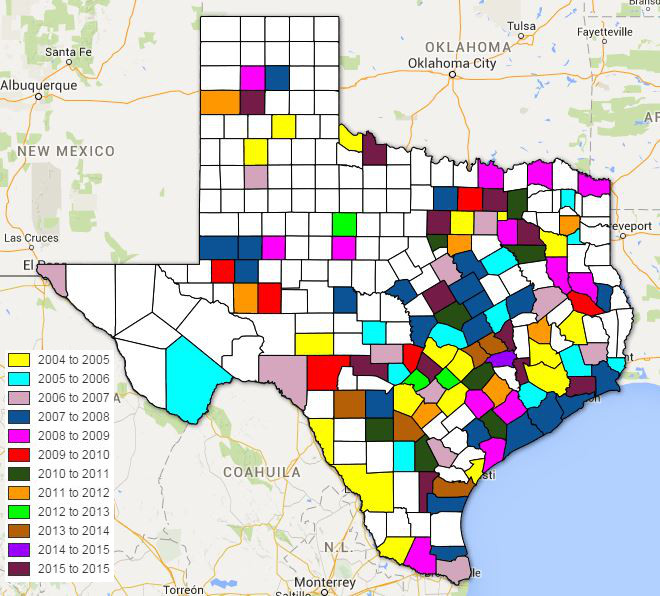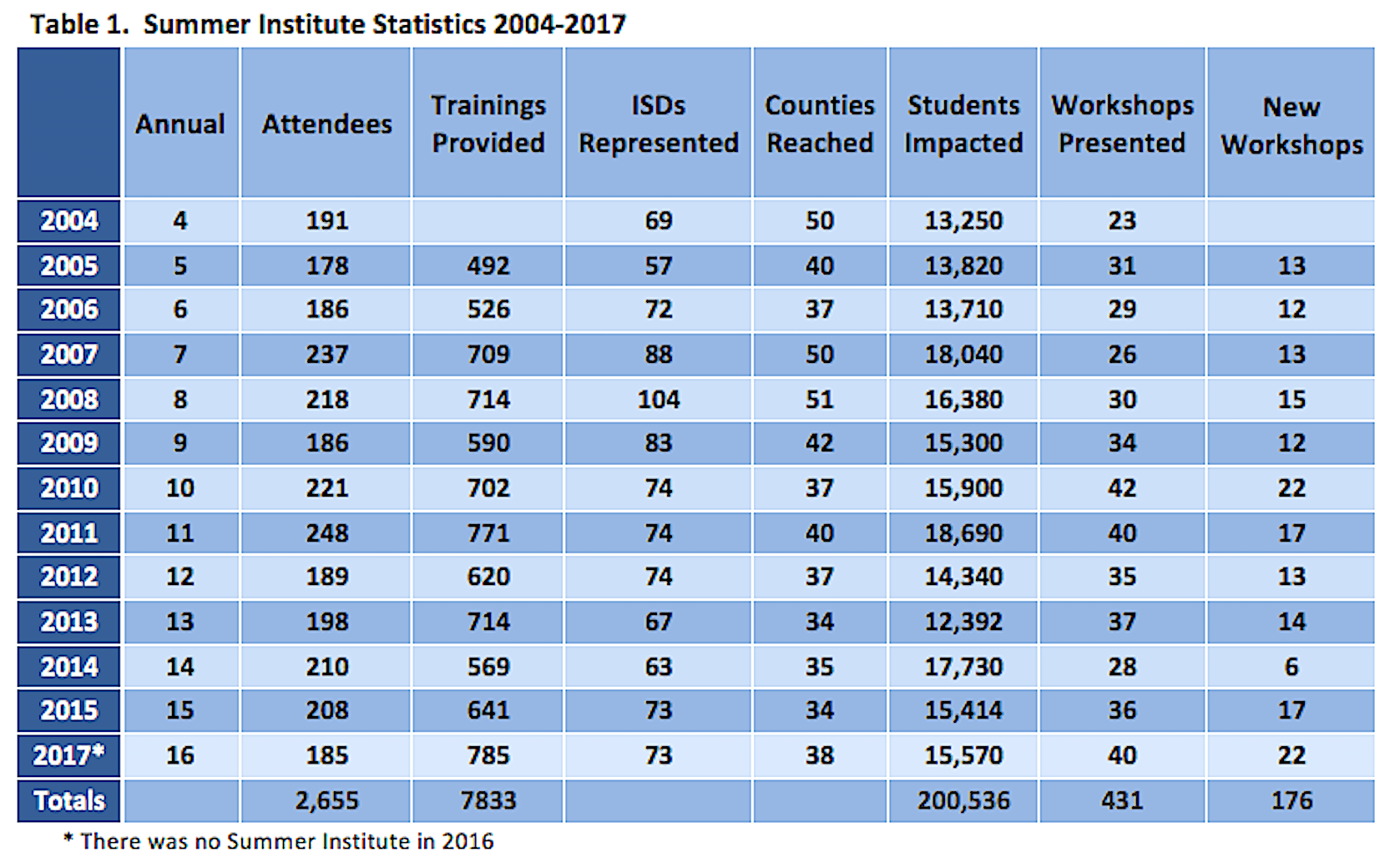History and Impact of SI
History
Since its inception in 2001, the SI has grown from 44 to over 200 participants annually. Participation in the SI, as measured by the number of attendees from different Texas counties (see Fig. 1), has grown substantially over the years due to the broad applicability, impact and reach of the program. Based on data collected at registration, including the number and size of classes taught by each presenter, we calculate that the Institute has impacted over 150,000 Texas students to date (see table provided below). Currently, SI is funded by Texas A&M University Health and partnering institutions.

Impact
The SI is evaluated through a variety of mechanisms. Workshops are assessed formatively, online, and on-site, allowing teachers to anonymously provide feedback on the quality of the workshop training and the appropriateness and usability of the materials. An extensive implementation survey is sent to attendees in May of the school year following their participation. In this way, the teachers can report on their use and the impact of the training and materials received at the SI. The support and enthusiasm for the SI is evidenced by the positive feedback from the participating teachers and trainers as well as the increase in attendance since its inception.
The summative workshop evaluations indicated that almost 90% of the teachers agreed or strongly agreed that the SI was valuable and useful. Greater than 86% indicated that they would highly recommend this opportunity to their colleagues (see figure 2 below).



In addition:
- 87% agreed or strongly agreed that they were satisfied with the curricular materials.
- 87% indicated that they intend to use the SI curricular materials in the future.
- > 80% indicated that the training received at the SI positively impacted their teaching.
- Nearly 90% indicated they were more likely to integrate EHS themes or topics into their lessons.
- 84% reported that their students developed a better understanding of the effects of the environment on human health.
